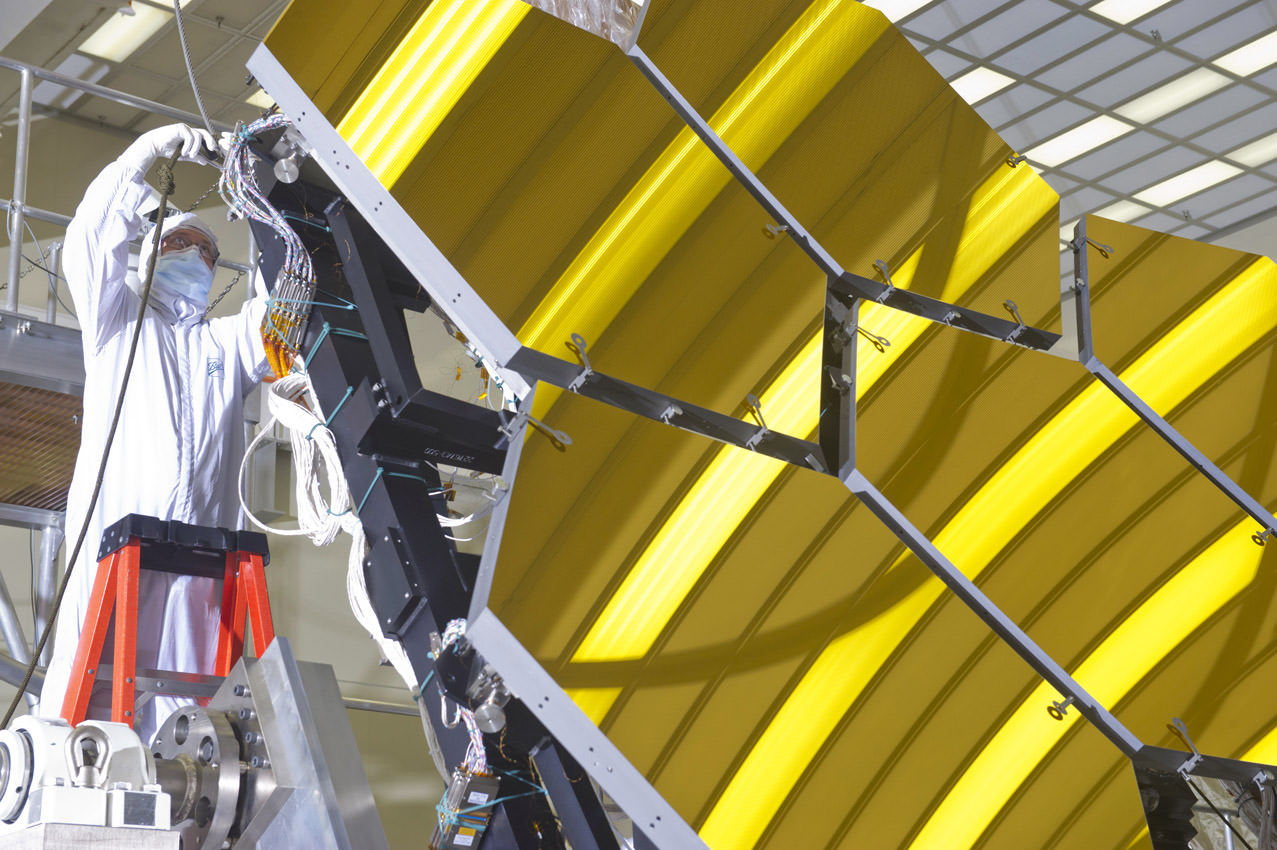[/caption]
The last of the 21 mirrors for the James Webb Space Telescope have come out of deep freeze – literally! – and are now approved for space operations, a major milestone in the development of the next generation telescope that’s being hailed as the “successor to Hubble.”
“The mirror completion means we can build a large, deployable telescope for space,” said Scott Willoughby, vice president and Webb program manager at Northrop Grumman Aerospace Systems. “We have proven real hardware will perform to the requirements of the mission.”
The all-important mirrors for the Webb telescope had to be cryogenically tested to make sure they could withstand the rigors and extreme low temperatures necessary for operating in space. To achieve this, they were cooled to temperatures of -387F (-233C) at the X-ray and Cryogenic Test Facility at Marshall Space Flight Center.
When in actual use, the mirrors will be kept at such low temperatures so as not to interfere with deep-space infrared observations with their own heat signatures.
JWST engineers anticipate that, with such drastic cooling, the mirrors will change shape. The testing proved that the mirrors would achieve the shapes needed to still perform exactly as expected.
“This testing ensures the mirrors will focus crisply in space, which will allow us to see new wonders in our universe,” said Helen Cole, project manager for Webb Telescope mirror activities.
Planned for launch in 2018, the JWST will be the premier observatory of the next decade, serving thousands of astronomers worldwide. It will study every phase in the history of the Universe, ranging from the first luminous glows after the Big Bang to the formation of solar systems capable of supporting life on Earthlike planets.
Learn more about the James Webb Space Telescope here.


Dude that is so totally cash. WOw. Amazing.
http://www.Total-Privacy dot US
Why is it being launched so late tho? Are they undergoing tests for the next 6 years?
Because the US governemtn cut funding to it. Could have been launched in 2015 but they wanted to spread it out over a longer time. Its lucky its still got funding, the way Obama has cut Nasa to the bone.
This is easily seen as barking up the wrong tree. Obama and his administration isn’t decisive here. He wanted to, and indeed did, increase NASA funding until US economical worries caught up with it.
What has been published about the latest budget rounds, the supporters of the administration policies managed to keep some funding for NASA science. Despite that pork politicians goes for the over-costly Constellation type of Dumb Big Booster that US can ill afford and use.
“On 6 July 2011, the United States House of Representatives’ appropriations committee on Commerce, Justice, and Science moved to cancel the James Webb project by proposing an FY2012 budget that removed $1.9bn from NASA’s overall budget, of which roughly one quarter was for JWST. This budget proposal was approved by subcommittee vote the following day, but it remains to be seen how the rest of the US House of Representatives and Senate will weigh in on this issue during the ongoing federal budget negotiations.[60][73][74][75]. In November 2011, congress reversed plans to cancel the JWST and instead capped additional funding to complete the project at $8 billion. […]
A review of the program released in August 2011, says the cost for the telescope and 5 years of operations will be 8.7 Billion USD with a planned launch in 2018.[62] Of that price about 800 million USD is for the 5 years of operations.[71]”
Its delays are mainly caused by its failure to keep to budget, as its costs has ballooned to an order of magnitude larger than first envisioned! (I kid you not, see its economical woes summarized already on its Wikipedia page.)
It got to the point that project budget cuts have been part of a political posturing that succeeded in forcing the project to rein in its escalating costs. Later cuts may cost, though, perhaps even motivated partly in some quarters by a desire to get it canceled.
Its delays are mainly caused by its failure to keep to budget, as its costs has ballooned to an order of magnitude larger than first envisioned! (I kid you not, see its economical woes summarized already on its Wikipedia page.)
It got to the point that project budget cuts have been part of a political posturing that succeeded in forcing the project to rein in its escalating costs. Later cuts may cost, though, perhaps even motivated partly in some quarters by a desire to get it canceled.